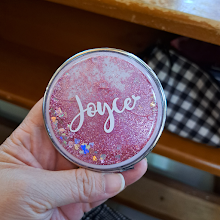Voilà
Result: You Connect With Your Cat! (Haha...) Well done! You know your cat better than most. Keep at it and you will learn to think like a cat in no time at all.
Question 1
Your cat affectionately rubs his head against your face. This behavior is called?
Answer: Bunting.
Explanation:
Bunting is a gesture of family acceptance and love. Your cat will rub along your chin and nose, engaging in the bunting behavior that began as a kitten when he'd rub around his mother's head seeking to nurse. The next time your cat seems to butt you in the face with the top of his head, don't get irritated realize the loving compliment he just paid you.
Question 2
Your cat is crouched low to the ground, pupils dilated, ears flattened, hissing and growling. Although the body is facing sideways (ready for retreat), the head and front paws are facing the forward. Your cat is exhibiting?
Answer: Fear aggression.
Explanation:
This position says that his body and hind feet are ready for retreat, but his head and front paws are ready to defend himself. Fear aggression is a conflicting emotion for a cat, because he doesn't want to be where he is, but he'll fight if necessary. This is a cat who needs to be left alone. A cat who is terrified isn't thinking clearly and will view any attempts at comfort as a threat.
Question 3
Your cat trots past his new scratching post and proceeds to sink his claws into your couch. Your cat is rejecting the post because?
Answer: It is covered in the wrong material and the post is not tall enough.
Explanation:
A scratching post must be covered in the right material, be sturdy and well constructed as well as tall enough for a full stretch. You can't go wrong if the covered material is sisal. Rough texture is very appealing to a cat. Remember, scratching is a natural, normal and healthy behavior.
Question 4
Your cat is looking out the window when a strange cat walks into the yard. As you approach your cat to investigate, he lashes out. Your cat is exhibiting?
Answer: Redirected aggression.
Explanation:
You have been a victim of redirected aggression. You weren't the intended target of his aggression but in such an excited state, he vents on the nearest victim when he can't get to the primary cause. To remedy this, leave your cat alone until he has calmed down. Block your cat's access to the window and do your best to keep strange cats out of the yard.
Question 5
When your cat flicks his upright tail at you, it is meant to convey?
Answer: Greetings
Explanation:
When standing or walking, an upright tail that is flicked at your recognition is usually meant as a greeting. In most cases, the message he's sending is, "Hi, I've missed you." The tail, which is part of the spine, is used for balance and serves an important role in feline communication.
Question 6
You walk by the bed, and suddenly your feet are ambushed by a set of teeth and 10 sharp claws. Your cat is exhibiting?
Answer: Play aggression
Explanation:
This is a hit-and-run attack of play aggression. This type of behavior is a result of a cat that isn't getting enough playtime, so he has to go for whatever moving targets he can find. To correct this behavior, use interactive toys and play with each cat at least two or three times a day, for a minimum of 15 minutes.
Question 7
Your cat's whiskers are forward facing and spread out. This indicates?
Answer: Alertness
Explanation: Whiskers that are forward facing and spread out usually indicate that the cat is alert and ready for action. Whiskers are used as a sensory device, relaying information to the brain, as well as helping to play an important role in feline communication. Whiskers are located on the upper lip, cheeks, above the eyes, and on the forelegs.
Question 8
Your cat is on your lap enjoying your affection when, without warning, he bites your hand. Your cat is exhibiting?
Answer: Overstimulation
Explanation: From your point of view, your cat attacked without warning. That is where the communication breakdown occurred, because he did give you advanced warning, you just did not see it. The signs that an owner often misses include tail lashing or thumping, skin twitching and a shifting of the body position. Next time, try to be more aware of your cat's body language, so you can avoid overstimulation.
Question 9
During a catfight, one cat rolls onto his back exposing his belly. This is a sign of?
Answer: Aggression
Explanation: A cat on his back, exposing his underside is not being submissive. Rather, he is preparing for battle. Rolling onto his back, he can then make full use of his natural weapons by exposing his claws on all four feet as well as using his teeth. This is his ultimate defensive-aggressive posture.
Question 10
Your contented cat makes eye contact, opens his mouth as if to meow but no sound comes out. This is an example of?
Answer: The silent meow
Explanation: The silent meow is exactly that, silent. It seems to be the visual version of the meow. Needless to say, the endearing effect of the silent meow usually causes the recipient to become putty in the paws. The gesture's purpose in cat-to-cat communication is still a mystery.
Subscribe to:
Post Comments (Atom)


























No comments